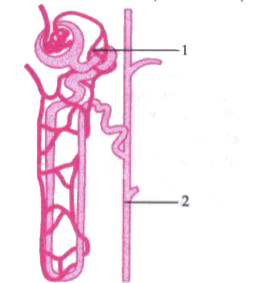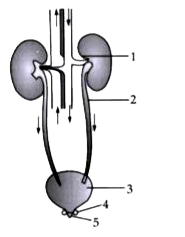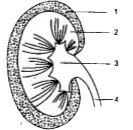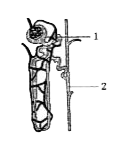What is a fluid ?
Step-by-Step Solution:
1. Definition of Fluid: A fluid is defined as any substance that continuously deforms under the action of shear stress. This means that when a force is applied parallel to the surface of the fluid, it will change shape and flow.
2. Characteristics of Fluids: Fluids can be characterized by their ability to flow. Unlike solids, which maintain a fixed shape, fluids will take the shape of their container. This property is due to the molecular structure of fluids, which allows the particles to move past one another.
3. Phases of Matter: Fluids include various phases of matter, primarily liquids and gases. Additionally, plasma can also be considered a fluid because it shares similar properties of flow and deformation.
4. Simpler Definition: A simpler way to define a fluid is to say that it is any substance that has a tendency to flow. This encompasses all the characteristics mentioned above.
5. Conclusion: In summary, a fluid is any substance that can continuously deform and flow under the influence of shear stress. This includes liquids, gases, and plasmas.
Topper's Solved these Questions
- PRESSURE IN FLUIDS AND ATMOSPHERIC PRESSUREBOOK - ICSECHAPTER - PRESSURE IN FLUIDS AND ATMOSPHERIC PRESSUREEXERCISE - Exercise-4(A)multiple choice
4 Videos
- PRESSURE IN FLUIDS AND ATMOSPHERIC PRESSUREBOOK - ICSECHAPTER - PRESSURE IN FLUIDS AND ATMOSPHERIC PRESSUREEXERCISE - Exercise-4(A)numericals
10 Videos
- PRESSURE IN FLUIDS AND ATMOSPHERIC PRESSUREBOOK - ICSECHAPTER - PRESSURE IN FLUIDS AND ATMOSPHERIC PRESSUREEXERCISE - Exercise -4(B)Numericals
5 Videos
- MOTION IN ONE DIMENSION BOOK - ICSECHAPTER - MOTION IN ONE DIMENSION EXERCISE - EXERCISE -2 (C) ( Multiple choice type :)
17 Videos
- PROPAGATION OF SOUND WAVES BOOK - ICSECHAPTER - PROPAGATION OF SOUND WAVES EXERCISE - EXERCISE -8(B) (Multiple choice type)
3 Videos
Similar Questions
What is fluid? Show that fluid exerts pressure and prove that the force acting on a fluid in equilibrium at rest have to be perpendicular to its surface.
View SolutionThe diagram given below is that of a structure present in a human kidney. Study the same and answer the questions that follow:

What is the fluid that comes to part '2' called ? Name the main nitrogenous waste in it.
View SolutionThe diagram given below represents an organ system in the human body. Study the same and answer the questions that follow:

What is the fluid that accumulats in part 3?
Which is the main nitrogenous waste present in it?
View SolutionThe diagram given below shows a section of a human kidney. Study the diagram carefully and answer the questions that follow:

(i) Label the parts numbered 1 to 4.
(ii) Why does part "2" have a striped appearance?
(iii)What is the fluid that passes down part:'4' ? Name the main nitrogenous waste present in it.
(iv) Mention the structural and functional unit of kidneys.
(v) Name the two major steps in the formation of the fluid mentioned
View SolutionWhat are fluids? Give two examples.
View SolutionA solid of density 2.5 kg m−3 floats in a fluid with one-third of its volume immersed in it. What is the density of the fluid?
View SolutionThe diagram given below is that of a structure present in a human kidney. Study the same and answer the questions that follows :

(i) Name the structure represented in the diagram.
(ii) What is the liquid entering part T called? Name two substances present in this liquid that are reabsorbed in the tubule.
(iii) What is the fluid that comes to part '2' called? Name the main nitrogenous waste in it.
(iv) Mention the three main steps involved in the formation of the fluid mentioned in (iii) above.
(v) Name the substance which may be present in the fluid part '11 if a person suffer from diabetes mellitus.
View SolutionWill an object of density ρ float in a fluid of density 1.5 ρ? If yes what fraction of the object's volume will remain above the fluid?
View SolutionWhat is the lubricating fluid around a movable skeletal joint called?
View SolutionWhich is the fluid component of blood?
View Solution
